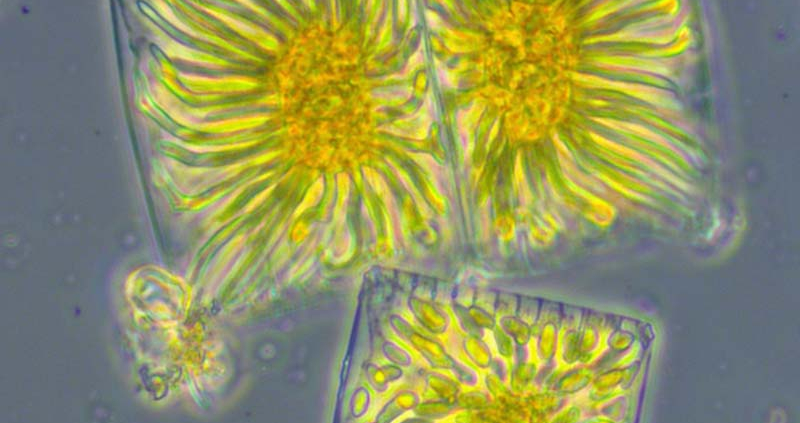Ecology and physiology of photosynthetic organisms
Context
As a “primary” biomass, phytoplankton and microphytobenthos are widely involved in the functioning of trophic chains, in the dynamics of biogeochemical cycles and ocean-atmosphere exchanges, which makes them an important and transverse subject of study for LEMAR teams. Quantitative and qualitative fluctuations in phytoplankton communities depend on physical, chemical and biological factors in the rapidly changing environment under the pressure of human activities. Knowledge in this field is now limited to the description of some of the “major” phenomena: seasonal fluctuation and succession of species, specific blooms… Studies highlight significant disturbances of these communities under the influence of anthropogenic forcings such as increased land inputs (e.g. trace metals, Fe, Cu, Co), increased atmospheric CO2 and temperature. The spatial and temporal evolution of the phytoplankton and microphytobenthic community resulting from this, such as the development of toxic micro-algae blooms, directly impacts ocean/atmosphere transfers (carbon, trace metals), but also on pelagic and benthic food resources (scallops, oysters, etc.). Phytoplankton composition has a direct impact on the entire ecosystem.
Objectives: In this context, we have identified several objectives common to the 3 LEMAR teams, including:
– study and better characterize the spatial and temporal distribution of phytoplankton and micro-phytobenthic populations
– assess the impact of biotic and abiotic factors on this spatial distribution
– study the biological and physiological responses of these phytoplanktonic and microphytobenthic populations to environmental forcings.
Around these themes, the objective of the transversal axis will therefore be:
(1) to share the knowledge and collaborations acquired individually by LEMAR researchers,
(2) to generate inter-team projects to better respond to the issues raised
(3) to better characterize our needs for advanced equipment and researchers specializing in the physiology and ecology of marine microbial communities.
Animation
Aude LEYNAERT (CNRS), Cécile KLEIN (UBO)
Organization
An effort of animation and training will be made within this transversal axis, in particular through the implementation of several actions.
1- bibliographic seminars: participants will meet regularly to present in a few minutes publications that are significant for the conceptual or technical progress they provide, or for the controversy they may generate.
2- Practical training on the laboratory’s instruments and culture facilities: a special effort will be made to train doctoral students in order to facilitate their autonomy on dedicated equipment.
3- Organisation of external training courses for the acquisition of new techniques and technologies concerning the problems developed.
4- Collective reflection on the needs for experimental and analytical structures (mesocosms, in situ measurements, community analysis, etc.).
5- Consultation and coordination on the purchase, installation and management of common equipment essential for experiments.





